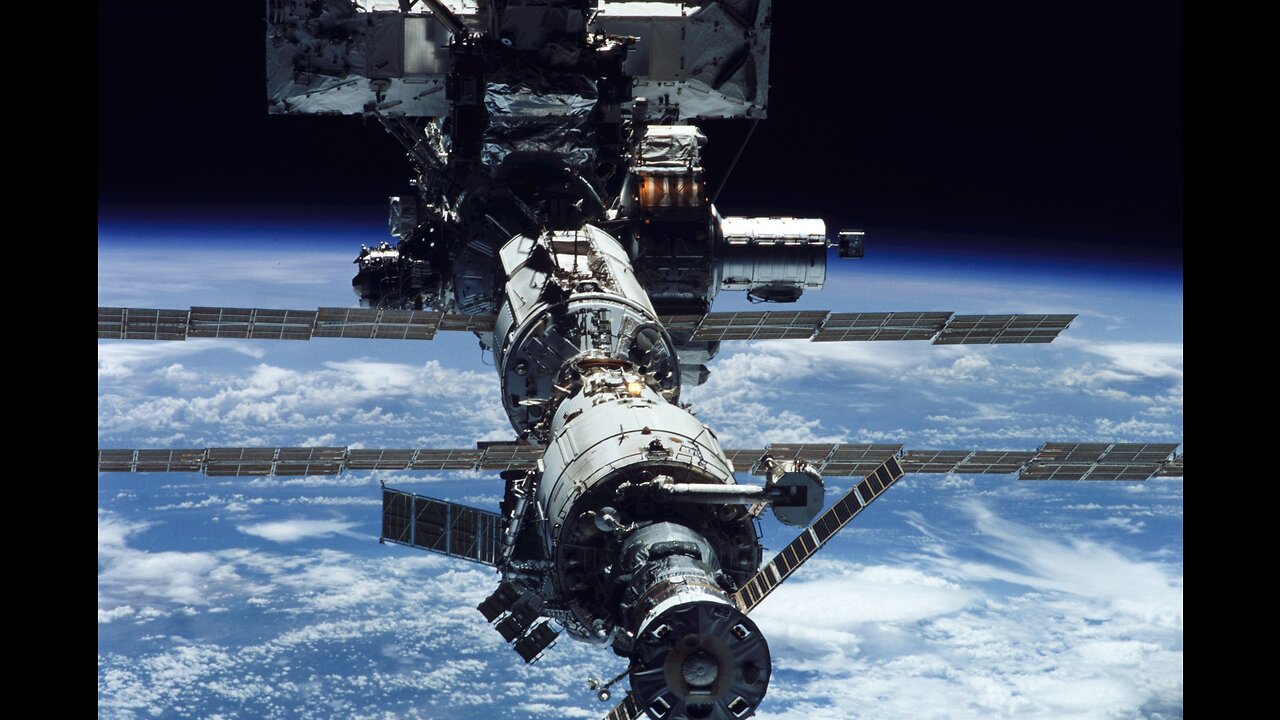Premium Only Content

How at work international space station
The International Space Station (ISS) is a complex and collaborative project involving multiple space agencies from around the world. Here's a general overview of how it operates:
1. **Construction and Assembly**: The ISS was built and assembled in space over several years. Modules and components were launched into orbit and then assembled in space by astronauts using robotic arms and spacewalks. This construction phase began in the late 1990s and continued until the station reached its current configuration.
2. **Crewed Missions**: The ISS is continuously crewed by astronauts and cosmonauts from various space agencies, including NASA (United States), Roscosmos (Russia), ESA (European Space Agency), JAXA (Japan Aerospace Exploration Agency), and CSA (Canadian Space Agency). These astronauts live and work on the station for several months at a time.
3. **Research and Experiments**: The primary purpose of the ISS is scientific research. Astronauts conduct experiments in various fields, including biology, physics, astronomy, and Earth sciences. This research helps us better understand how the human body responds to long-duration spaceflight and provides insights into fundamental scientific questions.
4. **Maintenance and Upkeep**: Astronauts on the ISS are responsible for maintaining the station's systems and equipment. This includes performing routine maintenance tasks, fixing any issues that arise, and occasionally upgrading hardware.
5. **Resupply Missions**: The ISS requires a regular supply of food, water, equipment, and scientific instruments. Cargo spacecraft from different space agencies, such as SpaceX's Dragon, Northrop Grumman's Cygnus, and Russian Progress spacecraft, are launched to resupply the station.
6. **Communication**: The ISS maintains constant communication with mission control centers on Earth. Astronauts and ground control teams communicate through a network of tracking and data relay satellites.
7. **International Collaboration**: The ISS is a symbol of international cooperation in space exploration. Participating space agencies share responsibilities, costs, and resources. They work together to ensure the station's safe and efficient operation.
8. **Orbit and Reboost**: The ISS orbits Earth at an altitude of approximately 420 kilometers (260 miles). To counteract the effects of atmospheric drag, periodic reboost maneuvers are performed to raise its orbit.
9. **Return to Earth**: Astronauts typically spend several months on the ISS before returning to Earth via Soyuz spacecraft or, in recent years, commercial crew vehicles like SpaceX's Crew Dragon.
The ISS serves as a unique platform for scientific research, international cooperation, and testing technologies for future deep-space missions. It has been continuously inhabited since November 2000 and is expected to remain in operation until at least 2030, with discussions ongoing about its future beyond that date.
-
 1:49:46
1:49:46
Glenn Greenwald
1 day agoTrump Fosters A Peace Deal With Israel & Gaza; Trump's Pressure On Israel Embarrasses His Enemies & Provides Foreign Policy Clues; Rubio & Hegseth On War And Militarism | SYSTEM UPDATE #389
84.6K157 -
 1:28:46
1:28:46
Donald Trump Jr.
15 hours agoOut of this World: Breaking News Investigation on Secret Alien Aircrafts, Live with Ross Coulthart & Lue Elizondo | TRIGGERED Ep.207
295K440 -
 1:39:31
1:39:31
Space Ice
11 hours agoSpace Ice & Redeye: Battlefield Earth & Rob Schneider
66.3K4 -
 1:33:38
1:33:38
Flyover Conservatives
1 day agoAMANDA GRACE | Prophetic Warnings Ignored: What Happens When Leaders Defy God | FOC Show
54.5K17 -
 59:57
59:57
The StoneZONE with Roger Stone
10 hours agoMEDICAL MURDER: A Sneak Peak into the Making of Died Suddenly 2 | The StoneZONE w/ Roger Stone
46.4K11 -
 1:07:03
1:07:03
Tucker Carlson
9 hours agoMother of Likely Murdered OpenAI Whistleblower Reveals All, Calls for Investigation of Sam Altman
142K166 -
 55:44
55:44
LFA TV
16 hours agoCongress Humiliates Itself | TRUMPET DAILY 1.15.25 7pm
140K39 -
 1:42:04
1:42:04
2 MIKES LIVE
11 hours ago2 MIKES LIVE #167 News Breakdown Wednesday!
87.3K15 -
 2:12:19
2:12:19
Quite Frankly
14 hours ago"Fahrenheit 2025: Drone Hysteria, The Fog, Smart L.A." ft. Elana Freeland 1/15/25
94.6K24 -
 1:43:00
1:43:00
Redacted News
13 hours agoBREAKING! CAPITOL POLICE ON HIGH ALERT OVER ATTEMPTS AGAINST TRUMP, MEDIA SILENT | Redacted
201K424